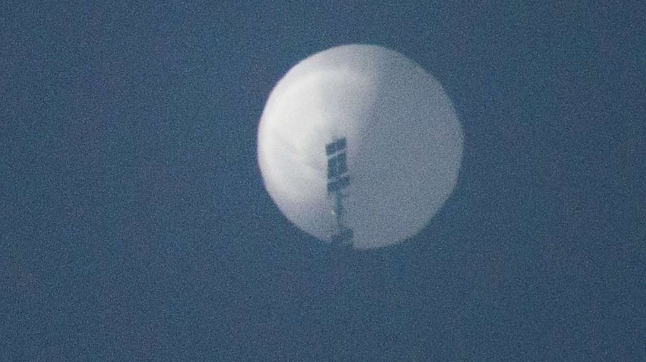
Explained: What is a ‘spy balloon’ and how it is used?

The United States has accused China of operating a “spy balloon” within its airspace, while Beijing has countered by asserting that it is simply a “civilian airship used for meteorological research.”
The occurrence has sparked controversy and ignited a political dispute in Washington after the white balloon, reportedly the size of three buses, was spotted drifting over sensitive regions in Montana. Authorities have stated that the balloon is carrying a significant payload.
Also Read: US shoots down Chinese spy balloon; Beijing threatens of repercussions
On Saturday afternoon, the US military finally had the opportunity to bring down the balloon “in a manner that would not pose a danger to American citizens,” as stated by a high-ranking defense official during a press briefing. This enabled the authorities to retrieve the fallen remnants from US territorial waters.
Eyewitness footage shared on social media showed the balloon seemingly disintegrating into a white cloud before the remains plummeted straight into the Atlantic Ocean.
President Joe Biden, who previously pledged “to address” the balloon situation on Saturday, commended the fighter pilots who were involved.
However, Beijing has rejected the US’s allegations of espionage and violation of international airspace as an attempt to “attack and discredit China.”
Also Read: China balloon: Many questions about suspected spy in the sky
In a Friday media briefing, the US foreign ministry spokesperson stated, In regards to the unexpected intrusion of a Chinese unmanned airship into US airspace due to uncontrollable circumstances, the Chinese side has verified it and informed the US side. It is a civilian airship used primarily for meteorological research. Due to being influenced by the Westerlies and having limited self-steering capabilities, the airship deviated significantly from its intended route. This is a purely unforeseen situation caused by uncontrollable circumstances and the facts are unambiguous.
The incident led to Secretary of State Antony Blinken postponing his planned visit to China next weekend. A local media outlet reported that Blinken was being cautious and chose to postpone, rather than cancel, his visit to avoid overreacting but also to prevent the issue from dominating the meeting.
What is a ‘Spy Balloon”
Approximately 15 years after the first successful human-carrying hot air balloon flight, balloons were already being utilized for military purposes. During the French Revolutionary Wars in the late 18th century, balloons were employed to gain an aerial perspective of the battlefront, with records indicating their usage in the Battle of Fleurus in 1794.
A useful tool in battle
Since then, balloons have been utilized in various wars, from the American Civil War to World War I. For over a century, before aircraft technology advanced greatly during World War I, balloons were the primary source of broad reconnaissance, giving a vantage point to monitor enemy positions and movements that was impossible to obtain from the ground.
Also Read: Tell China to end ‘blatant aggression’ against Taiwan, India: US officials told
Japanese Usage
As technology advanced and balloons could reach higher altitudes during World War II, their usage also changed. For example, the Japanese military attempted to launch incendiary bombs into US territory using balloons specifically made to float with the jet stream air currents. Although no military objectives were impacted, several civilians lost their lives when one of the balloons crashed in an Oregon forest.
The American effort
After the war, the US military began investigating the usage of high-altitude spy balloons, resulting in a massive series of missions known as Project Genet. During the 1950s, the project sent photographic balloons over Soviet Union’s territory, prior to the widespread use of surveillance satellites as we know today.
Relevance in modern times
Although satellites and advanced aircraft and drone technologies have diminished the significance of high-altitude balloons in the military, they still hold a crucial role.
Also Watch: India set to overtake China as world’s most populous nation: United Nations
Cheap alternative
In comparison to satellites that can cost millions to manufacture and require complex technology for launch, high-altitude balloons are cost-effective and straightforward to launch and control. Although balloons cannot be directed directly, they can be roughly guided towards a target zone by altering their altitudes to catch different wind currents, according to a 2005 study by the Air Force’s Airpower Research Institute, reported by Reuters.
Ability to hover
Additionally, in contrast to satellites which are situated at much higher altitudes and travel at immense speeds, spy balloons have the advantage of being able to remain suspended at lower elevations. This allows for better quality images and more time to collect intelligence in a specific region.
This recent event, where the balloon not only arrived in the mainland US but was able to function without interference until it was brought down, underscores its ongoing significance.

